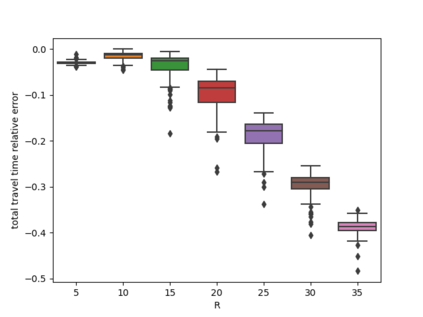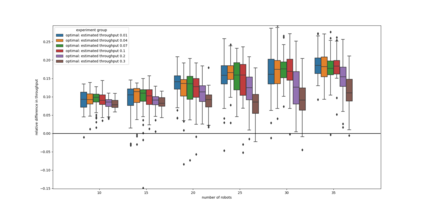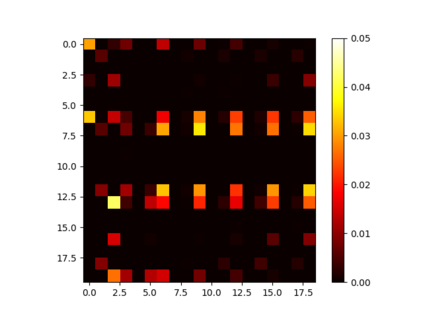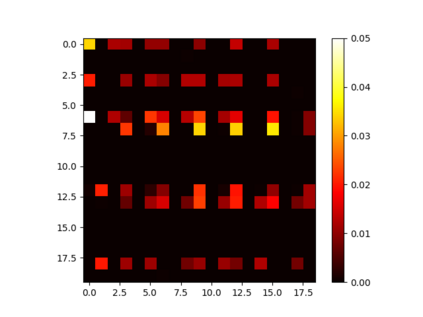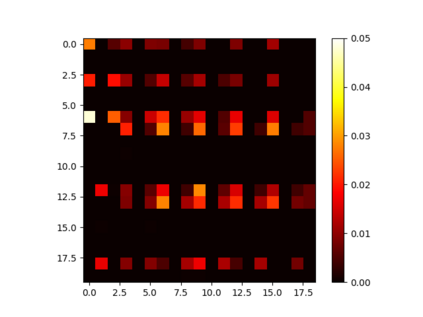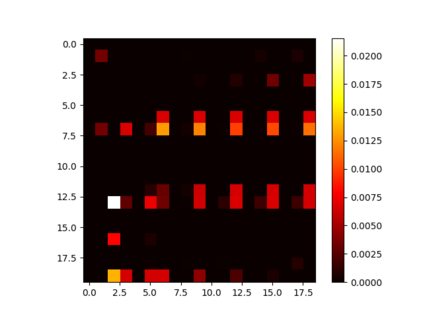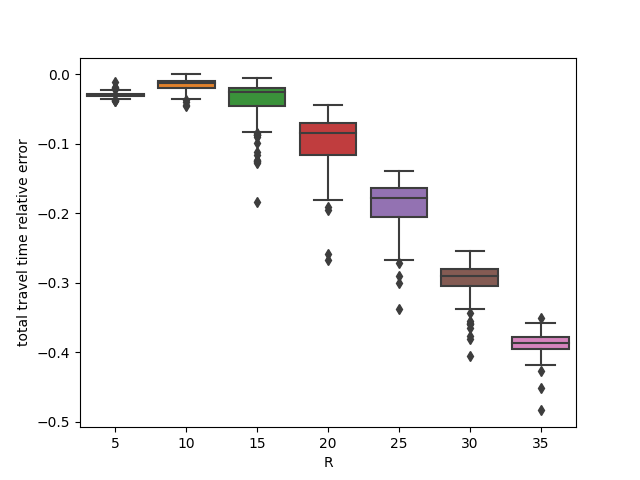Express companies are deploying more robotic sorting systems, where mobile robots are used to sort incoming parcels by destination. In this study, we propose an integrated assignment and path-finding method for robots in such sorting systems. The method has two parts: offline and online. In the offline part, we represent the system as a traffic flow network, develop an approximate delay function using stochastic models, and solve the min-cost network flow problem. In the online part, robots are guided through the system according to the calculated optimal flow split probability. The online calculation of the method is decentralized and has linear complexity. Our method outperforms fast multi-agent path planning algorithms like prioritized planning because such algorithms lead to stochastic user equilibrium traffic assignment. In contrast, our method gives the approximated system-optimal traffic assignment. According to our simulations, our method can achieve 10%--20% higher throughput than zoning or random assignment. We also show that our method is robust even if the initial demand estimation is inaccurate.
翻译:Express 公司正在部署更多的机器人排序系统, 移动机器人用来按目的地对接收的包裹进行分类 。 在这项研究中, 我们为这种分类系统中的机器人提出一个综合任务分配和路径调查方法。 方法有两个部分: 离线和在线。 在离线部分, 我们代表系统作为交通流量网络, 使用随机模型开发一个大约的延迟功能, 并解决低成本网络流量问题 。 在在线部分, 机器人根据计算的最佳流量分配概率通过系统进行引导 。 方法的在线计算是分散的, 并且具有线性复杂性 。 我们的方法比快速多试样路径规划算法( 喜欢优先规划, 因为这种算法导致随机用户均衡流量分配 ) 。 相反, 我们的方法给出了大约的系统最佳流量分配 。 根据我们的模拟, 我们的方法可以达到比分区或随机分配高出10%- 20% 。 我们还显示我们的方法是稳健的, 即使最初的需求估计不准确 。</s>

